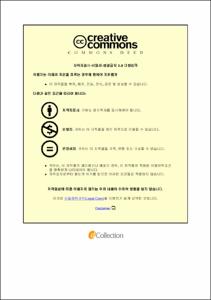Increasing Number of Pancreatic Duct Cannulation Attempts Beyond One and Metal Biliary Stent Insertion as Risk Factors for Post-Endoscopic Retrograde Cholangiopancreatography Pancreatitis
- Abstract
- Background and Aims: Post-endoscopic retrograde cholangiopancreatography (ERCP) pancreatitis (PEP) is a major complication of ERCP; in severe cases, it can be life threatening. Many PEP risk factors, including pancreatic duct cannulation, have been identified; however, whether the number of repeat cannulation attempts affects PEP risk is unknown. We aimed to identify the effects of repeated pancreatic duct cannulation and other potential risk factors on PEP incidence.
Methods: We retrospectively analyzed 877 patients with native papillae who underwent ERCP, at Asan Medical Center between January 2012 and December 2016. We examined potential patient- and procedure-related risk factors, and PEP incidence by univariable and multivariable logistic regression analyses.
Results: The most common indication for ERCP was the presence of pancreatobiliary stones/sludge (47.8%), followed by pancreatobiliary malignancy (37.4%). Thirty-four patients (3.9%) had mild (21 patients; 2.4%), moderate (12 patients; 1.4%), and severe (one patient; 0.1%) PEP. Univariable analysis revealed younger age, diagnosis of malignant common bile duct or ampulla of Vater stricture, two or more episodes of pancreatic duct cannulation, and metal biliary stent insertion as risk factors and pancreatobiliary stones/sludge as a protective factor for PEP. Following multivariable analysis, two or more episodes of pancreatic duct cannulation and metal biliary stent insertion remained in the final model. PEP did not increase significantly in case of a single cannulation (4.0%) compared with no cannulation (2.7%). However, patients with two cannulations had 8.0% incidence; those with three or more cannulations had 14.3% incidence.
Conclusions: Pancreatic duct cannulation and metal biliary stent insertion were associated with increased PEP incidence in patients undergoing ERCP performed by highly experienced endoscopist. As for the pancreatic duct cannulation, two or more cannulations considerably increased PEP incidence. This suggested that preventive measures, such as pancreatic duct stent placement or rectally administered nonsteroidal anti-inflammatory drugs or alternative cannulation measures might be considered in patients with two or more cannulations or those undergoing metal biliary stent insertion.|배경 및 목적: 내시경역행담췌관조영술 (Endoscopic retrograde cholangiopancreatography, ERCP) 후 발생하는 췌장염 (Post-ERCP pancreatitis, PEP)은 ERCP의 주요 합병증 중 하나이며, 심할 경우 사망에 이를 수도 있다. 췌관 삽관을 비롯하여 여러 가지 PEP와 관련된 위험인자가 밝혀져 있으나 췌관 삽관의 횟수와 PEP의 위험도와의 관계는 지금까지 연구된 바가 없다. 본 연구에서는 PEP 발생에 있어 반복적인 췌관 삽관과의 연관성 및 그 외의 다른 위험인자들을 밝히고자 한다.
방법: 2012년 1월부터 2016년 12월까지 울산대학교 서울아산병원에서 ERCP 시술을 받은 환자 중 이전에 유두를 통한 삽관을 받은 적이 없는 877명을 대상으로 후향적 분석을 시행했다. PEP 발생률과 환자 및 시술과 관련된 위험인자들의 관련성 확인하기 위해 단변량 및 다변량 로지스틱 회기분석을 시행했다.
결과: ERCP의 적응증으로는 췌담도석 또는 췌담도 슬러지가 47.8%로 가장 많았으며 췌담도계의 악성질환이 37.4%로 그 다음을 차지했다. PEP는 총 3.9%에 해당하는 34명의 환자에게 발생했고, 21명이 경증, 12명이 중등증, 그리고 1명의 중증이었다. 단변량 분석을 시행한 결과 낮은 연령, 악성 총담관 또는 바터 팽대부 폐색, 2회 이상의 췌관 삽관, 금속 담관 스텐트 삽입이 PEP 발생의 위험인자로 확인됐으며, 췌담도석 또는 췌담도 슬러지는 PEP 발생의 보호인자로 확인됐다. 이후 시행한 다변량 분석에서는 2회 이상의 췌관 삽관과 금속 담관 스텐트 삽입이 PEP 발생의 독립적인 위험인자로 최종적으로 확인됐다. 췌관 삽관의 경우 1회까지는 PEP 발생률이 4.0% 정도로 의미 있는 차이를 보이지 않았으나 2회에서는 8.0%, 3회 이상에서는 14.3%로 발생률이 의미 있게 증가했다.
결론: 본 연구를 통해서 숙련된 내시경 의사에게 ERCP를 시행 받은 환자들에게서 췌관 삽관 및 금속 담관 스텐트 삽입이 PEP 발생의 위험인자로 확인됐다. 췌관 삽관의 경우 2회 이상 시행될 경우 PEP 발생률이 의미 있게 증가했다. 따라서 2회 이상의 췌관 삽관이나 금속 담관 스텐트 삽입이 이루어진 환자에게는 예방적으로 췌관 스텐트를 삽입하거나 직장 내 비스테로이드소염제 투약을 고려해 볼 수 있겠다.
- Issued Date
- 2018
- Awarded Date
- 2018-02
- Type
- Dissertation
- Affiliation
- 울산대학교
- Department
- 일반대학원 의학과
- Advisor
- 박도현
- Degree
- Master
- Publisher
- 울산대학교 일반대학원 의학과
- Language
- eng
- Rights
- 울산대학교 논문은 저작권에 의해 보호받습니다.
- Appears in Collections:
- Medicine > 1. Theses (Master)
- 파일 목록
-
-
Download
 200000003926.pdf
기타 데이터 / 507.57 kB / Adobe PDF
200000003926.pdf
기타 데이터 / 507.57 kB / Adobe PDF
-
Items in Repository are protected by copyright, with all rights reserved, unless otherwise indicated.